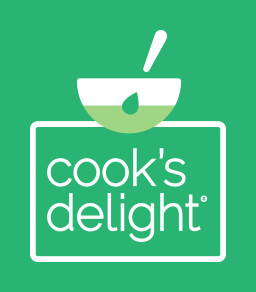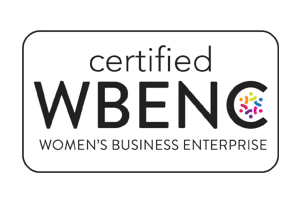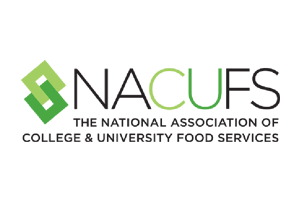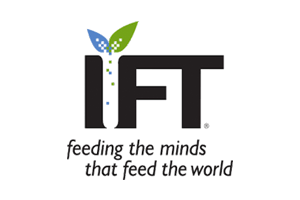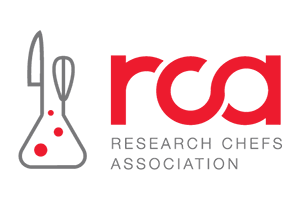Ask Our Quality Assurance Expert
Our quality assurance expert answers questions relating to Cook’s Delight® soup bases, food handling and safe food manufacturing. Find answers regarding what makes our soup base shelf stable? How often should a company perform a mock recall? What is the best way to thaw frozen food? From the most detailed questions about soup flavor concentrates to answers about food safety, our experts have an answer for you.
Your spec sheets indicate that Cook's Delight soup bases don't require refrigeration. What makes them shelf stable?
Our products are shelf stable because they are carefully formulated to maintain a water activity of less than 0.85. Water activity is the measurement of water that is available to help sustain microbial growth. Bacteria cannot grow in products where the water activity is less than 0.85.
What is the shelf-life for Cook's Delight soup base?
The shelf life of our Cook’s Delight® soup bases and flavor concentrates is as follows:
- Meat, Poultry and Vegetable Soup Base and Flavor Concentrate Pastes = 6-8 months at room temperature, 12 months refrigerated or 18 months if frozen.
- Seafood Soup Base and Flavor Concentrate Pastes = 6 months if refrigerated and 12 months if frozen.
- Dry Soup Base Products = 2 years.
All of our products are considered shelf stable. The varying recommendations above are for best quality when consumed by our customer.
Are Cook's Delight organic bases officially certified by a respected regulatory agency?
Yes, Cook’s Delight® organic soup bases are certified organic by Quality Assurance International (QAI). QAI is a US based international organic certification company that is authorized by the United States Department of Agriculture (USDA) as an accredited certifying agent to certify organic operations to the National Organic Program standards.
What are some food safety tips?
Foodservice operations should take a risk-based approach when performing an analysis to identify any food safety hazards from purchasing needed ingredients to storing leftovers. This includes evaluating any conditions, practices or other factors that can contribute to a food hazard that may result in a foodborne illness.
How often should a company perform a mock recall?
It is up to each company to determine the frequency that mock recalls should be performed. Consider the potential risk associated with the product produced, as well as, the success rate of the mock recalls performed. If you are consistently missing the established goals, more frequent recall simulations may be needed. Learn more about protecting your company by performing mock recalls.
What is the best way to thaw frozen food?
The best way to thaw frozen food is by tempering it in a refrigerator that is maintained at 40°F or less. Allow 24 hours of tempering for every 5 lbs of a large frozen item. If your refrigerator is colder than 40°F, allow more time to temper your food.
How do you keep food safe during an emergency?
Food safety handling and storage can present challenges in emergency situations such as power outages, floods and fires. Follow the recommended protocol for keeping your food safe in an emergency situation.
Are you SQF Certified?
Yes, our most recent audit for SQF Food Safety Code for Manufacturing Edition 8.1 was conducted on January 2, 2020. We scored a 97 in the Excellent category.
Ask Our Chef
Our chef expert answers questions relating to controling food costs with Cook’s Delight® soup bases, suggestions on boosting flavor and how to make stock and broth from our soup bases.
What is the difference between stock that is pre-made and soup base?
Pre-made canned and box stocks are sold with the water already added. You are limited in capability of adjusting the intensity of the flavor profile because the stock is pre-made.
Cost control is important in food manufacturing and foodservice operations. One pound of Cook’s Delight® soup base makes 5 1/2 gallons of soup stock or broth at the standard dilution rate making it a very economical choice.
Explore our video on Stockonomics – The Economics of Soup Stock that compares the costs of box, can and Cook’s Delight® soup base.
View Stockonomics – The Economics of Cook’s Delight Soup Base Video
What is the most economical way to boost flavor of my clam chowder?
Try Adding Cook’s Delight® Simply Chicken Base for a fuller background flavor. The subtle notes of the chicken base will provide a boost to the other flavors in your clam chowder.
How do you make soup stock from your soup bases and flavor concentrates?
Just add 1 cup of boiling water and 5 grams of Cook’s Delight® soup base or flavor concentrate. Depending upon the product, 5 grams equals 1/2 to 1 tsp of soup base.
Each 1 lb of Cook’s Delight® makes 5 1/2 gallons of soup stock.
Ask Our Product Development Expert
Our product development expert answers questions relating to Cook’s Delight® soup bases and food manufacturing. Find answers regarding how soup base adds flavor versatility to industrial formulations? What does clean label mean? Are salt and sodium the same thing?
How can Cook's Delight soup base add flavor versatility to my industrial formulations?
Cook’s Delight® soup bases and broth concentrates can be used in applications from breakfast through dinner. Here are some suggestions:
- Use mushroom base to enhance or replace mushrooms in a omelette.
- Chipotle base in mashed potatoes is on trend for the consumers love of peppers and heat.
- Boost the flavors of Soups, Sauces, Chili and Mac and Cheese.
- Are you filling pasta? Add just about any of the bases to the filling to extend the flavor — save money on the meats, too.
These are just a few suggestions. Contact us if you’d like to discuss more applications with our product development team.
What does Clean Label mean in product development?
While there is no single universally accepted definition of clean label at this time, the overall goal is to convey transparency, quality and trust in a product. In the general sense:
- Free-from claims
- Minimal processing
- No artificial preservatives, artificial colors or artificial ingredients
Read more about Clean Label: Understanding the Basics.
Are salt and sodium the same thing?
Although salt and sodium are often used interchangeably, they do not mean the same thing. Salt, or sodium chloride, is a compound that is abundant in nature and is used to preserve and flavor food. Sodium is a mineral and a chemical element found in salt.
Ask Our Regulatory Expert
Our regulatory expert answers questions relating to Cook’s Delight® soup bases, labeling and food regulations. Find answers such as what is the difference between organic and made with organic foods? What are the “Big 8” allergens? What is the difference between non-gmo, gmo free and organic foods? What is in natural flavoring? What does low sodium mean?
What is the difference between organic soup base and soup base made with organic ingredients? Are they both certified organic?
Soup base that is labeled “Organic” is comprised of at least 95% organic certified ingredients. Soup base that is labeled as “Made with Organic” has a minimum of 70% organic certified ingredients. Both “organic” and “made with organic” Cook’s Delight® soup bases are certified organic by Quality Assurance International (QAI).
What is in the Natural Flavoring on your labels?
Any ingredient that is listed in natural flavoring complies with the Code of Federal Regulations 21 CFR Part 101.22.
No Big 8 allergenic ingredient can be listed in Natural Flavoring. The Big 8 allergens are: Soy, Dairy, Wheat, Eggs, Fish, Crustaceans, Tree Nuts and Peanuts.
21 CFR Part 101.22
§ 101.22 Foods; labeling of spices, flavorings, colorings and chemical preservatives.
(3) The term natural flavor or natural flavoring means the essential oil, oleoresin, essence or extractive, protein hydrolysate, distillate, or any product of roasting, heating or enzymolysis, which contains the flavoring constituents derived from a spice, fruit or fruit juice, vegetable or vegetable juice, edible yeast, herb, bark, bud, root, leaf or similar plant material, meat, seafood, poultry, eggs, dairy products, or fermentation products thereof, whose significant function in food is flavoring rather than nutritional. Natural flavors include the natural essence or extractives obtained from plants listed in §§ 182.10, 182.20, 182.40, and 182.50 and part 184 of this chapter, and the substances listed in § 172.510 of this chapter.
What ingredients are listed as Spice on your label?
Any ingredient that is listed as “spice” complies with the Code of Federal Regulations 21 CFR Part 101.22.
No Big 8 allergenic ingredient can be listed as a spice. The Big 8 allergens are: Soy, Dairy, Wheat, Eggs, Fish, Crustaceans, Tree Nuts and Peanuts.
21 CFR Part 101.22
§ 101.22 Foods; labeling of spices, flavorings, colorings and chemical preservatives.
(a)(2) The term spice means any aromatic vegetable substance in the whole, broken, or ground form, except for those substances which have been traditionally regarded as foods, such as onions, garlic and celery; whose significant function in food is seasoning rather than nutritional; that is true to name; and from which no portion of any volatile oil or other flavoring principle has been removed. Spices include the spices listed in § 182.10 and part 184 of this chapter, such as the following:
Allspice, Anise, Basil, Bay leaves, Caraway seed, Cardamon, Celery seed, Chervil, Cinnamon, Cloves, Coriander, Cumin seed, Dill seed, Fennel seed, Fenugreek, Ginger, Horseradish, Mace, Marjoram, Mustard flour, Nutmeg, Oregano, Paprika, Parsley, Pepper, black; Pepper, white; Pepper, red; Rosemary, Saffron, Sage, Savory, Star aniseed, Tarragon, Thyme, Turmeric.
Paprika, turmeric, and saffron or other spices which are also colors, shall be declared as “spice and coloring” unless declared by their common or usual name.
What does Low Sodium mean?
The FDA defines sodium levels in relation to established Daily Values for food labeling.
Low Sodium means 140 mg of sodium or less per serving.
To learn more about sodium and how to flavor foods with less sodium read Why and How to Beat Sodium Explodium™.
What are the "Big 8" allergens?
The “Big 8” Allergens include Milk, Eggs, Fish, Crustacean Shellfish, Tree Nuts, Peanuts, Wheat and Soy. These allergens have been identified to cause 9 out of 10 allergic reactions.
What is the difference between Non-GMO, GMO Free and Organic Food?
- GMO Free – No detectable GMO protein/DNA
- Non-GMO – Not derived from biotechnology
- Organic – must be Non-GMO to be certified
What are the compliance dates for food manufacturers to convert to FDA updated Nutritional Facts Format?
Changes to manufacturer’s nutrition facts panel may be made now. The deadlines for changes are:
- Manufacturers with $10 million or more in annual foods sales must comply with the FDA final rule by July 26, 2018.
- Manufacturers with less than $10 million in annual foods sales must comply with the final rule by July 26, 2019.
Why don't you have any "Natural" bases?
The term “Natural” and “All natural” do not have federally regulated definitions. This leaves a significant regulatory gap in food labeling law and has resulted in a great deal of confusion and lawsuits by groups who feel food manufacturers are trying to mislead consumers.
While many of our soup bases and flavor concentrates meet the current FDA guidance (minimally processed with no added colors, artificial flavors or synthetic substances) we have elected to remove label claims indicating that our products are “Natural” to eliminate any confusion.
If you are interested in learning more, please contact us and ask about our clean label and Organic Certified products.
What foods can be labeled as "gluten free"?
The FDA has set a gluten limit of less than 20 parts per million for foods that are labeled gluten free. This is the lowest level that can reliably be detected in foods using scientifically validated analytical methods. Other countries use the same criteria. The FDA regulation allows gluten free foods to be labeled as “gluten free,” “free of gluten,” “no gluten,” and “without gluten”.
What is gluten?
Gluten is a protein that occurs naturally in barley, wheat, rye and crossbreeds of these grains like triticale. Gluten is the ingredient that gives breads and other grain products their shape and texture.
What do Daily Value and Percent Daily Value mean on a Nutrition facts panel?
The Daily Value are amounts of nutrients to consume or not to exceed each day. Daily Value is used to calculate the percent Daily Value.
Percent Daily Value (%DV) should be used as a tool. The %DV shows how much a nutrient in a serving of the food contributes to a total daily diet.
Be sure to pay attention to the serving sizes. The %DV is typically listed for one serving but a package may contain more that one serving.
Do you have any Cook's Delight organic soup bases that are certified organic for export to Canada?
Yes, we do have organic soup bases that meet the COR standards as equivalent.
Do labels have to be resubmitted to USDA if only the Nutrition Facts panel changes?
According to the FSIS Compliance Guideline for Label Approval August 2017 Appendix 2: Factual Statements and Claims that are Generically Approved, they do not have to be resubmitted. The labels can be generically approved if the label complies with all regulatory requirements and the statement or claim is truthful and not misleading. Supporting documentation for the statement or claim must be part of the labeling record.
